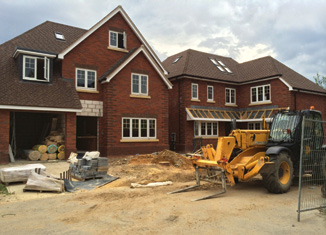There is increasing demand for houses in the UK, especially in suburban areas that are commutable to a large city. One of the ways of meeting this demand is finding ways to build in areas that are already developed, a process known as ‘intensification’. In wealthy counties like Surrey, many homes have large garden plots at the rear or side of the property that are not always being used to their full potential.
Over the last few years there has been a surge in demand for ‘backland’ developments that include planning permission for separate dwellings in gardens. A backland site is usually a section of garden with road access at the rear or side of a property, which may not be visible from the road, or it may have the potential for road access by knocking down a garage or converting unused space.
The latest draft of the London Plan indicates that higher densities of development in suburban locations would help to meet the current housing need and many developers are now focusing on building on backland sites.
I spoke with George Ball, director of acquisitions at Open Vu, and started off by asking him the meaning behind the company name. “It is a disruptive play on words. We use ‘vu’ instead of ‘view’ and we think it makes our name easier to remember.”
George says that the company has been in operation for three years now and that teaming up with Chris Price, director of property at Open Vu, made sense because Chris had more experience in property development, while George had more experience in sourcing and trading land.
He adds: “A lot of developers don’t want to do the leg work involved to go through the entire planning process. At the same time, some people don’t like middle-men that take some of their profit, but they don’t see the work that goes into it.”
So, how many sites do you keep to build on yourselves and how many do you obtain planning for and then sell to a developer?




















